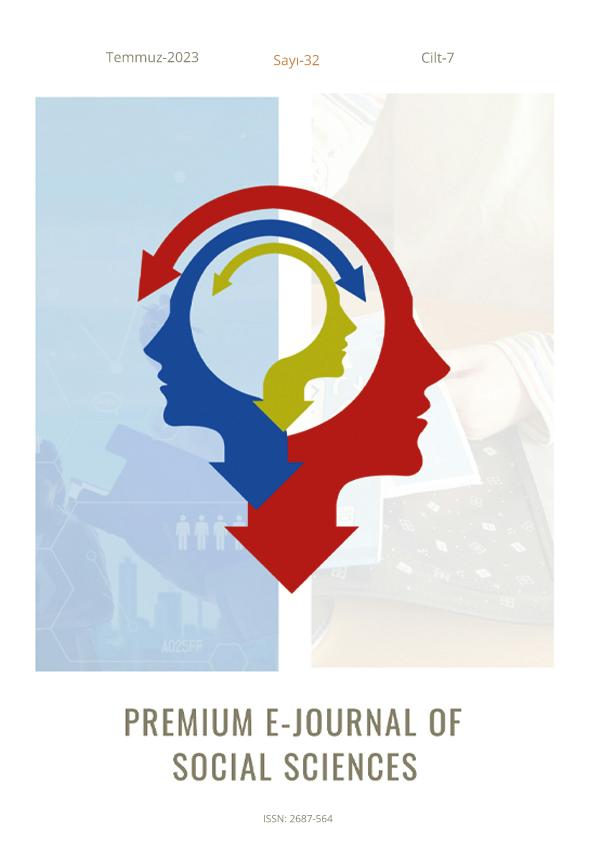Evaluation of Occupational Health and Safety Training of the Employees of the Building Inspection Company
DOI:
https://doi.org/10.5281/zenodo.8201233Keywords:
Occupational health and safety, Construction Inspection Firms, Occupational health, and safety trainings, surveyAbstract
Occupational health and safety practices and norms have gained importance with the developing technology. According to occupational accident statistics, the construction sector takes the first place in occupational accidents and diseases. The fact that there are too many working areas in the construction sector, and the academic education level of the employees are the main reasons for this. Studies show that training in occupational health and safety is effective in preventing occupational accidents. The importance, and contribution of special education, especially in the construction sector, is more visible. Building inspection firms are firms that perform the task of inspection from the first stage of the construction of a building to the last stage. They check on behalf of the building owner whether the building is of the promised standard and quality. These companies can work on behalf of public and legal entities. These firms, which employ architects, engineers, and construction technicians, ensure that the building is suitable for obtaining a license. This study, was conducted to determine the adequacy and effect of occupational health and safety training on the employees of building inspection companies working in the construction sector, which is one of the most dangerous sectors in terms of fatal accidents. The demographic characteristics of the employees, the findings of work accidents and occupational diseases, their participation in the training, and their awareness of the subject were questioned. In addition to increasing occupational health and safety training, it’ll be possible to prevent accidents by providing vocational training and increasing this awareness
Downloads
References
Akboğa, Ö. (2011). Hazır Beton Sektörünün İş Güvenliği Açısından Analizi. [Yüksek Lisans Tezi], Fen Bilimleri Enstitüsü, Ege Üniversitesi.
Akyiğit, E. (2001). İş Kanunu Şerhi. Seçkin Yayınları.
Arıcak, F., Çağlarer E. (2021). İş Güvenliği Eğitimlerinde Kullanılan Modellere Meta Analiz Yöntemle Bakış. Pearson Journal of Social Sciences-Humanities, 15, 482-490.
Bayrak, E. , Yılmaz Karan, T. , Karakaş, İ. , Uçan, R. , Bingöl, N. ve Karahan, M. (2021). İnşaat Sektöründe İş Sağlığı ve Güvenliğine Yönelik Olarak Uygulanan Eğitim Metodlarının Çalışan Davranışlarına Yansımasının İncelenmesi. İSG Akademik, 3 (1) , 25-45 .
Durmaz, T. (2009). Yapı İşlerinde İş Sağlığı ve Güvenliği Mevzuatı ve Yeni Gelişmeler. Doktora Tezi, Fen Bilimleri Enstitüsü, Ege Üniversitesi.
Karadağ, S. E. (2010). Türk İnşaat Sektörünün İş Güvenliği Açısından Risk Analizi. [Yüksek Lisans Tezi], Fen Bilimleri Enstitüsü, Ege Üniversitesi.
Saygılı, U. M. (2016). İnşaat Sektöründe İş Güvenliği Eğitimi. [Yüksek Lisans Tezi], Fen Bilimleri Enstitüsü, Beykent Üniversitesi.
Tam, C. M., Zeng, S. X. & Deng, Z. M. (2004). Identifying Elements of Poor Construction Safety Management in China. Safety Sci., 42(2), 569-586. https://doi.org/10.1016/j.ssci.2003.09.001
Tammam, Y. (2013). Analysis of Occupational Safety And Health Practices On Construction Sites in Turkey: Field Study. [Yüksek Lisans Tezi], Fen Bilimleri Enstitüsü, İstanbul Teknik Üniversitesi.
Uzun, İ. M. (2012). İnşaatlarda Yapı Makinaları Kullanımında İş Güvenliği Risk Değerlendirmesi, [Yüksek Lisans Tezi], Fen Bilimleri Enstitüsü, İstanbul Teknik Üniversitesi.
Üstünel, A. H. (2009). İş Sağlığı ve Güvenliğinde İşverenin Yükümlülükleri. [Yüksek Lisans Tezi], Sosyal Bilimler Enstitüsü, Selçuk Üniversitesi.
URL1- https://sgk.gov.tr/Istatistik/Yillik/fcd5e59b-6af9-4d90-a451-ee7500eb1cb4/
Downloads
Published
How to Cite
Issue
Section
License
Copyright (c) 2023 Premium e-Journal of Social Science (PEJOSS)

This work is licensed under a Creative Commons Attribution 4.0 International License.


